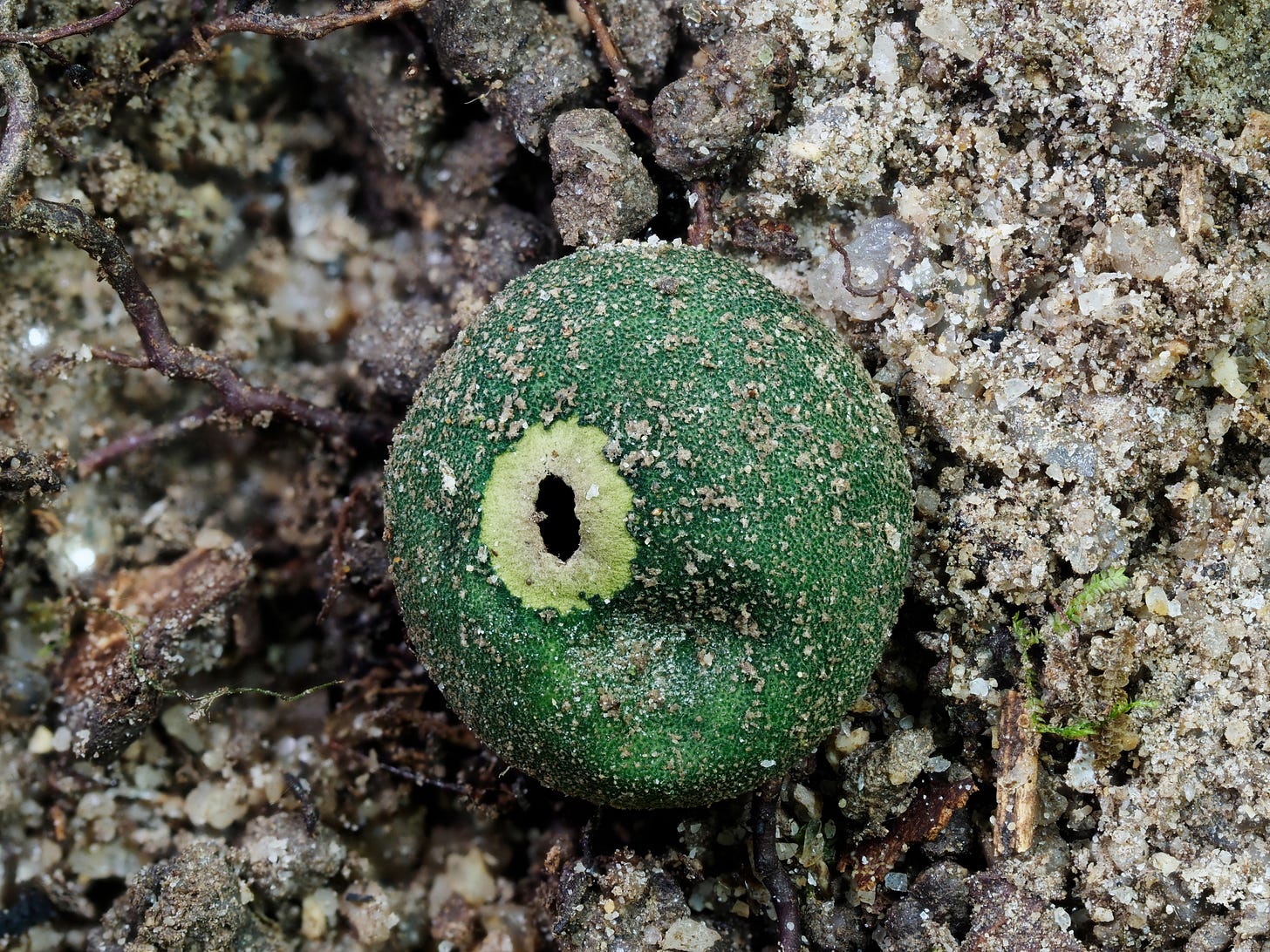Photos of this funky mushroom have been floating around on the interwebs for a while. But I’d only heard of a few places in Sabah where they grow. A wish to see them with my own eyes was slim to none unless I packed my bags and departed to Kota Kinabalu and made my way to Danum Valley or other lowland old-growth dipterocarp forest to scan the ground (during the right season) to uncover the already green specimens camouflaged amongst the forest floor.


Chlorogaster dipterocarpi, a fungus native to Sabah, Borneo, is categorized as Vulnerable (VU) by the IUCN due to habitat loss. This rare species is found in just three to four sites, mainly the Danum Valley.
Its population is estimated at 15,000–20,000 individuals but is decreasing due to deforestation, which has reduced forest cover by over 30% in the region over 50 years.
In one of my final forays before leaving Malaysia, I joined Gim Siew Tan, and we managed to find over 20 green puffballs at various growth stages. These were truly different and unlike anything I’ve ever seen.
They looked somewhat familiar; the yellow "eye" stared back at me, but unlike typical Chlorogaster, they lacked stalks and more closely resembled species like Calostoma or Lycoperdon, not like how I remember them, like a Dak Lak avocado. Hopefully, DNA sequencing will confirm what it is.
When I prodded one, a cloud of dark purple spores burst out.
In their 2004 study, Læssøe and Jalink described Chlorogaster dipterocarpi and noted an immature specimen from Papua New Guinea that hinted at a possible second species in the genus. This specimen shared features with C. dipterocarpi, suggesting a broader distribution across Southeast Asia. However, due to the specimen's immaturity, a definitive classification wasn’t possible at the time.



In the end, this was a rare gem of the forest, a mysterious green puffball clinging to survival as deforestation threatens its habitat. Each time one of these strange fungi is spotted, it offers a glimpse into a world we’re just beginning to understand—one with possible hidden relatives waiting to be discovered. Protecting these mushrooms and their delicate ecosystems isn’t just about conservation; it’s about keeping the doors open to the many secrets these forests still hold.













